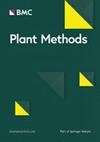Developing a simple and rapid method for cell-specific transcriptome analysis through laser microdissection: insights from citrus rind with broader implications
IF 4.7
2区 生物学
Q1 BIOCHEMICAL RESEARCH METHODS
引用次数: 0
Abstract
With the rapid development of single-cell sequencing technology, histological studies are no longer limited to conventional homogenized tissues. Laser microdissection enables the accurate isolation of specific tissues or cells, and when combined with next-generation sequencing, it can reveal important biological processes at the cellular level. However, traditional laser microdissection techniques have often been complicated and time-consuming, and the quality of the RNA extracted from the collected samples has been inconsistent, limiting follow-up studies. Therefore, an improved, simple, and efficient laser microdissection method is urgently needed. We omitted the sample fixation and cryoprotectant addition steps. Instead, fresh samples were embedded in Optimal Cutting Temperature medium within 1.5 ml centrifuge tube caps, rapidly frozen with liquid nitrogen, and immediately subjected to cryosectioning. A series of section thicknesses of citrus rind were tested for RNA extraction, which showed that 18 μm thickness yielded the highest quality RNA. By shortening the dehydration time to one minute per ethanol gradient and omitting the tissue clearing step, the resulting efficient dehydration and preserved morphology ensured high-quality RNA extraction. We also propose a set of laser microdissection parameters by adjusting the laser power to optimal values, reducing the aperture size, and lowering the pulse frequency. Both the epidermal and subepidermal cells from the citrus rind were collected, and RNA extraction was completed within nine hours. Using this efficient method, the transcriptome sequencing of the isolated tissues generated high-quality data with average Q30 values and mapping rates exceeding 91%. Moreover, the transcriptome analysis revealed significant differences between the cell layers, further confirming the effectiveness of our isolation approach. We developed a simple and rapid laser microdissection method and demonstrated its effectiveness through a study based on citrus rind, from which we generated high-quality transcriptomic data. This fast and efficient method of cell isolation, combined with transcriptome sequencing not only contributes to precise histological studies at the cellular level in citrus but also provides a promising approach for cell-specific transcriptome analysis in a broader range of other plant tissues.通过激光显微切割开发简单快速的细胞特异性转录组分析方法:从柑橘外皮中获得的启示及更广泛的影响
随着单细胞测序技术的快速发展,组织学研究不再局限于传统的均质组织。激光显微切割技术可以准确分离特定组织或细胞,与新一代测序技术相结合,可以揭示细胞水平的重要生物过程。然而,传统的激光显微切割技术往往复杂耗时,而且从采集的样本中提取的 RNA 质量不稳定,限制了后续研究。因此,迫切需要一种改进的、简单而高效的激光显微切割方法。我们省略了样本固定和添加冷冻保护剂的步骤。取而代之的是,将新鲜样本嵌入 1.5 毫升离心管盖内的最佳切割温度培养基中,用液氮快速冷冻,然后立即进行冷冻切片。对柑橘外皮的一系列切片厚度进行了 RNA 提取测试,结果表明 18 μm 厚度的 RNA 质量最高。通过将脱水时间缩短至每乙醇梯度一分钟并省略组织清除步骤,高效的脱水和保留的形态确保了高质量的 RNA 提取。我们还提出了一套激光显微切割参数,将激光功率调整到最佳值,缩小光圈,降低脉冲频率。柑橘表皮细胞和表皮下细胞都被采集到了,RNA提取在九个小时内完成。利用这种高效的方法,对分离的组织进行转录组测序产生了高质量的数据,平均 Q30 值和映射率超过 91%。此外,转录组分析显示细胞层之间存在显著差异,进一步证实了我们分离方法的有效性。我们开发了一种简单快速的激光显微切割方法,并通过一项基于柑橘外皮的研究证明了这种方法的有效性,我们从中获得了高质量的转录组数据。这种快速高效的细胞分离方法与转录组测序相结合,不仅有助于在细胞水平上对柑橘进行精确的组织学研究,还为在更广泛的其他植物组织中进行细胞特异性转录组分析提供了一种前景广阔的方法。
本文章由计算机程序翻译,如有差异,请以英文原文为准。
求助全文
约1分钟内获得全文
求助全文
来源期刊

Plant Methods
生物-植物科学
CiteScore
9.20
自引率
3.90%
发文量
121
审稿时长
2 months
期刊介绍:
Plant Methods is an open access, peer-reviewed, online journal for the plant research community that encompasses all aspects of technological innovation in the plant sciences.
There is no doubt that we have entered an exciting new era in plant biology. The completion of the Arabidopsis genome sequence, and the rapid progress being made in other plant genomics projects are providing unparalleled opportunities for progress in all areas of plant science. Nevertheless, enormous challenges lie ahead if we are to understand the function of every gene in the genome, and how the individual parts work together to make the whole organism. Achieving these goals will require an unprecedented collaborative effort, combining high-throughput, system-wide technologies with more focused approaches that integrate traditional disciplines such as cell biology, biochemistry and molecular genetics.
Technological innovation is probably the most important catalyst for progress in any scientific discipline. Plant Methods’ goal is to stimulate the development and adoption of new and improved techniques and research tools and, where appropriate, to promote consistency of methodologies for better integration of data from different laboratories.
 求助内容:
求助内容: 应助结果提醒方式:
应助结果提醒方式:


